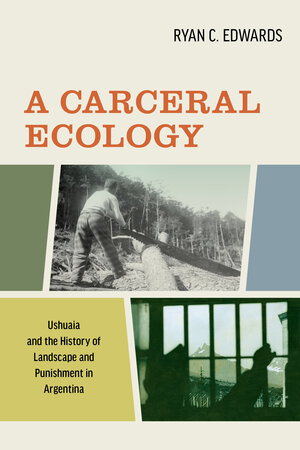Ryan C. Edwards received a PhD in History from Cornell University and has taught at the University of Tennessee at Chattanooga, Princeton University, and Cayuga Correctional Facility in Upstate New York.

Closer to Antarctica than to Buenos Aires, the port town of Ushuaia, Argentina is home to a national park as well as a museum that is housed in the world’s southernmost prison. Ushuaia’s radial panopticon operated as an experimental hybrid penal colony and penitentiary from 1902 to 1947, designed to revolutionize modern prisons globally. A Carceral Ecology offers the first comprehensive study of this notorious prison and its afterlife, documenting how the Patagonian frontier and timber economy became central to ideas about labor, rehabilitation, and resource management. Mining the records of penologists, naturalists, and inmates, Ryan C. Edwards shows how discipline was tied to forest management, but also how inmates gained situated geographical knowledge and reframed debates on the regeneration of the land and the self. Bringing a new imperative to global prison studies, Edwards asks us to rethink the role of the environment in carceral practices as well as the impact of incarceration on the natural world.
How did you first become interested in this topic?
I came to the crossroads of environmental history and prison studies through an unexpected encounter. After a few months of traveling through Patagonia, working on farms and at hostels, I exchanged a stereotypical Patagonia guidebook for for an out-of-place copy of Michel Foucault’s Discipline and Punish to read during my bus journey to Ushuaia. When I then saw the infamous Ushuaia prison —is a common tourist destination— I thought about the space in juxtaposition to the various geographies I had traversed on my way south. Mountainscapes, a temperate rain forest, and a desert steppe, and now, a radial prison made famous by experiments from around the world in global capitals. I originally thought that the prison would feature as one built-environment within a broader historical geography of Patagonia, but throughout my research I started obsessing over the lack of nature and ecology in prison studies. The Ushuaia prison was the perfect case study to explore how international prison science discussions intersected with how state governments used natural resource management to govern peripheries and frontiers.
What was something unexpected that you learned while working on the book?
Beyond the central focus of my work on the intersection of prisons and the environment, I was regularly surprised by how integrated prisons were into social and cultural aspects of regional life as well as national identity. The rise of solitary confinement and the prison industrial complex in recent decades has codified the idea of “inside” and “outside” worlds, making prisons both a caricature and black-box. Yet this was hardly the case in the early twentieth century. When you enter a prison community— by which I mean a town or province that relies on a prison for its economic livelihood, census count, infrastructures, and many other things— it becomes clear that prisons are deeply emplaced both in space and local politics, defining and guiding social realities.
How does A Carceral Ecology help us to rethink the relationship between incarceration and the natural world?
Prisons were, and continue to be, more porous than they are portrayed in popular culture. While prison walls define spatialities of punishment and control, they also require and produce resource networks and reflections on the built environment. My work highlights how major government agencies, such as forestry and national park services, which are thought of as concerned first and foremost with the natural world, could be built up through prison labor and social control. In the case of Ushuaia, this meant the governmental agencies behind the prison and forest management were entwined, both in practice and financially. Though this was hardly unique to Argentina. Many of us, for example, have read in recent years about how inmate firefighters in California —my home state— have risked their lives to protect both private land and state-owned forests. Regardless of the specific intersection, I want readers to think more critically about how the vistas they enjoy, hiking trails and property lines, and other everyday taken-for-granted luxuries are sometimes made real by incarcerated peoples who might actively choose to, or are often forced to, do work on the behalf of free people.
What is the main message you hope readers take away from the book?
Prisons are so engrained in our social fabric that is hard to think beyond them, or of a world without them. Yes, there have been calls recently to abolish prisons, and more commonly to “humanize” them, but in both cases these movements focus very closely on the institution itself. And, of course, there are also people who call for more prisons and harsher punishments. But, in each of these opposing stances, the prison is a defined, fortified space with boundaries that are rather rigid. I hope that readers of my work will think more broadly about prisons looking to their social and environmental horizons, and mine the footnotes for the excellent scholarship that is tackling prison studies in different contexts around the world to understand our carceral past to shape new futures.
